Can My Teenager Live in a Granny Annexe? Legal Guidelines

Wondering if your teenager can legally move into your granny annexe? As families seek creative living solutions (mainly due to property prices being ridiculously high!), this question is becoming increasingly common. Here’s everything you need to know about housing your teen in a garden annexe, including legal requirements and practical considerations to make this arrangement work for your family.
Why Parents Consider Annexes for Teenage Living
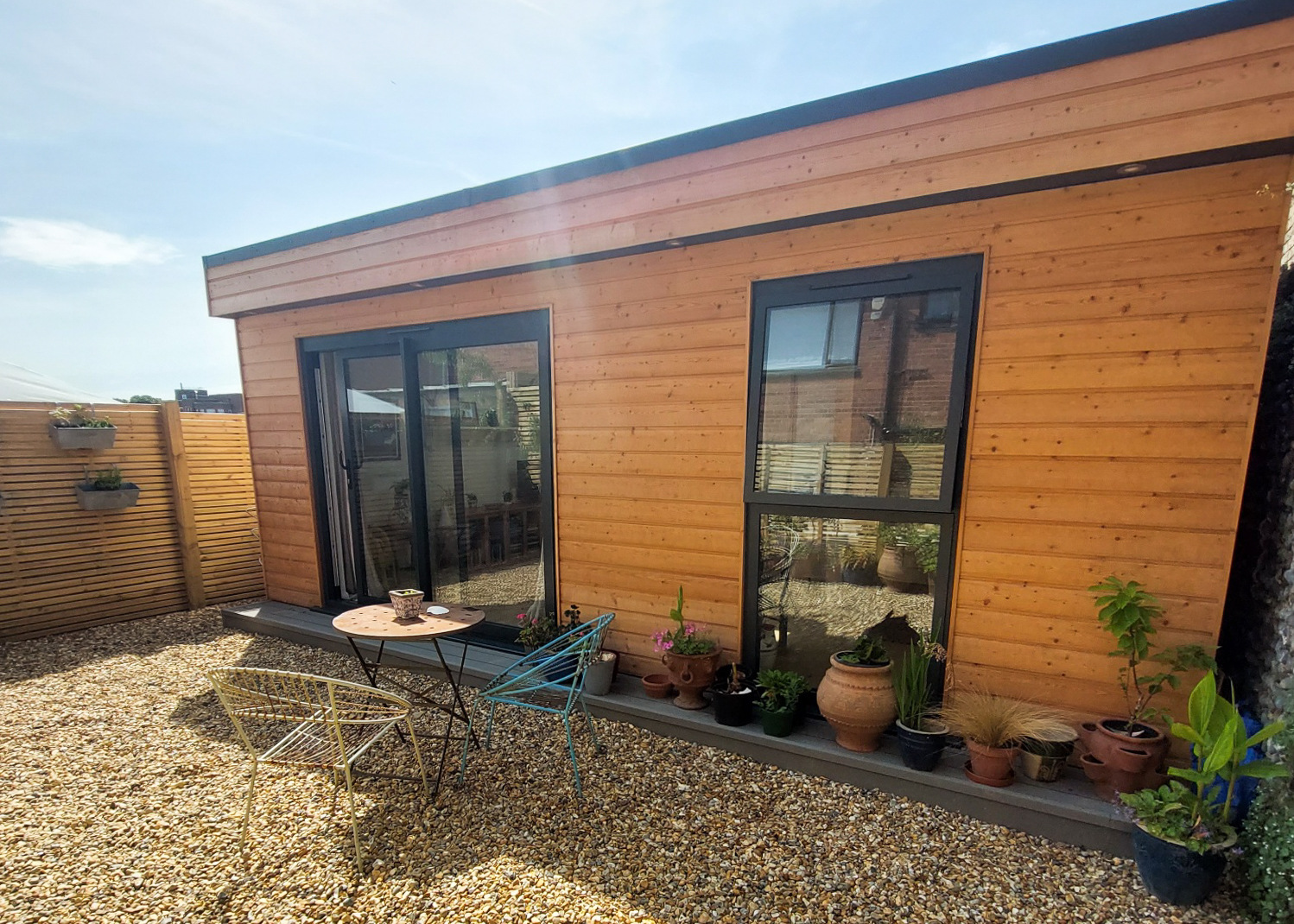
Source : Swift Garden Rooms
Modern family dynamics continue to shift, with more UK families looking for innovative ways to balance their teenagers’ growing need for independence with parental supervision. Granny annexes, traditionally built for elderly relatives, now serve a much broader purpose – including providing teenagers with their own space while keeping them within the family fold.
Many parents of older teens find themselves in a challenging position. Their children want freedom and privacy but may not be ready (financially or emotionally) for complete independence. The rising cost of university accommodation and UK property prices means young adults often stay at home longer than previous generations did. A garden annexe offers an elegant solution to this dilemma.
The annexe creates a physical separation that helps reduce household tensions common with teenagers. Your teen gets a taste of adult living – managing their own space, perhaps cooking some meals, and enjoying privacy – while parents maintain appropriate oversight and family connections. This arrangement works particularly well for families with older teenagers (16+) who show responsibility and maturity.
Real families report multiple benefits from this living arrangement:
- Fewer arguments about noise, mess, and different schedules
- Greater mutual respect between parents and teens
- Improved academic performance due to dedicated study space
- Smoother transition to adult independence
- Continued family bonding without constant friction
The Wilsons from Surrey installed an annexe for their 17-year-old son last year. ‘It’s transformed our relationship,’ says mother Janet. ‘Tom has his friends over without disturbing us, manages his own schedule, and actually invites us over for dinner sometimes. He’s developing real life skills while still being part of our family.’
What Legal Requirements Apply to Teen Annexe Living?
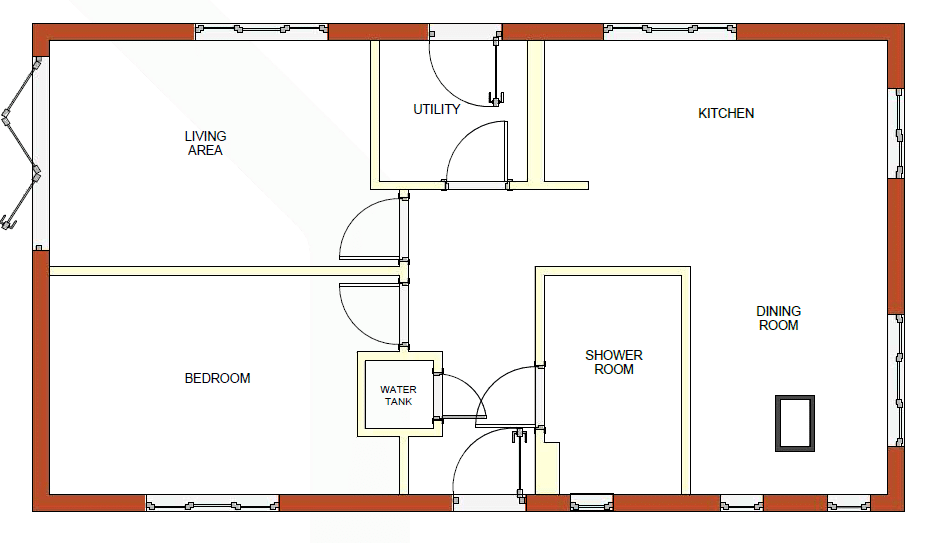
Source : NAPC – Annexe Planning Permission Consultancy
Before you start planning a teenage retreat in your garden, it’s important to understand the legal framework that governs annexe living. The good news is that housing your teenager in a garden annexe is generally permitted under UK regulations, but specific rules must be followed.
Planning Permission Requirements
Contrary to popular belief, planning permission is usually required for annexes where someone will live, even temporarily. The planning considerations for a teenager’s annexe include:
- The annexe must be ancillary to the main dwelling – meaning it cannot function as a completely separate residence
- It should show a functional connection to the main home
- The occupant should be part of the same household or family unit
- The annexe cannot be sold separately from the main house
Local authorities generally look favourably on applications for family members, including teenagers. The key factor is demonstrating that the annexe will function as part of your existing home, rather than as a separate dwelling. This means explaining in your application that it’s for your teenager and how it supports your family living arrangement.
Building Regulations
- Structural integrity and stability
- Fire safety measures
- Adequate ventilation
- Energy efficiency standards
- Bathroom and kitchen facilities that meet health and safety requirements
- Appropriate access, including consideration for disabilities
Working with a specialist annexe company ensures these regulations are met without hassle. They’ll handle the building regulation approval process as part of your project.
Council Tax Implications
Generally, annexes occupied by family members (including teenagers) are not subject to separate council tax. The annexe should be assessed as part of the main property. However, if your teen starts paying you rent formally or the annexe becomes truly separate, this could change. Always check with your local council for specific guidance on your situation.
How Does Annexe Living Benefit Teenage Development?
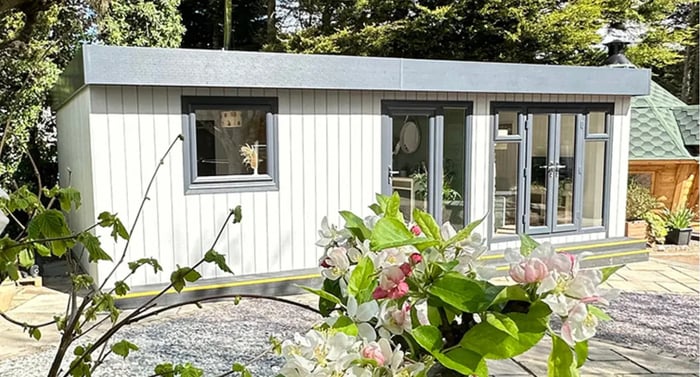
Source : Cabin Master
The transition from childhood to adulthood represents one of life’s most significant challenges. Parents want to support this journey while helping teens develop the skills they’ll need for independent living. An annexe creates the perfect middle ground where teenagers can flourish.
Living in an annexe teaches teenagers about responsibility in tangible ways. They must manage their own space – keeping it clean, reporting maintenance issues, and possibly handling some utility usage. This offers practical experience that simply isn’t possible when parents are constantly present to remind, nag or fix problems.
Many parents report significant growth in their teenagers’ maturity after moving to an annexe. Psychologists confirm this connection, noting that appropriate levels of independence foster confidence and self-sufficiency. The semi-detached nature of annexe living provides a safety net while encouraging development.
Key developmental benefits include:
- Space management skills – keeping their environment functional and clean
- Time management without direct parental oversight
- Basic home maintenance awareness
- Energy and resource conservation (especially if teens contribute to utility costs)
- Budgeting skills if they manage certain expenses
- Social boundary setting – learning when and how to invite friends over
- Problem-solving when minor issues arise
For teenagers heading to university, an annexe serves as perfect preparation. They experience independence while still having family support nearby – an ideal stepping stone to full autonomy. For those not university-bound, it helps develop the life skills needed for eventual independent living while allowing time to save money for future housing costs.
Which Features Make Annexes Teen-Friendly?
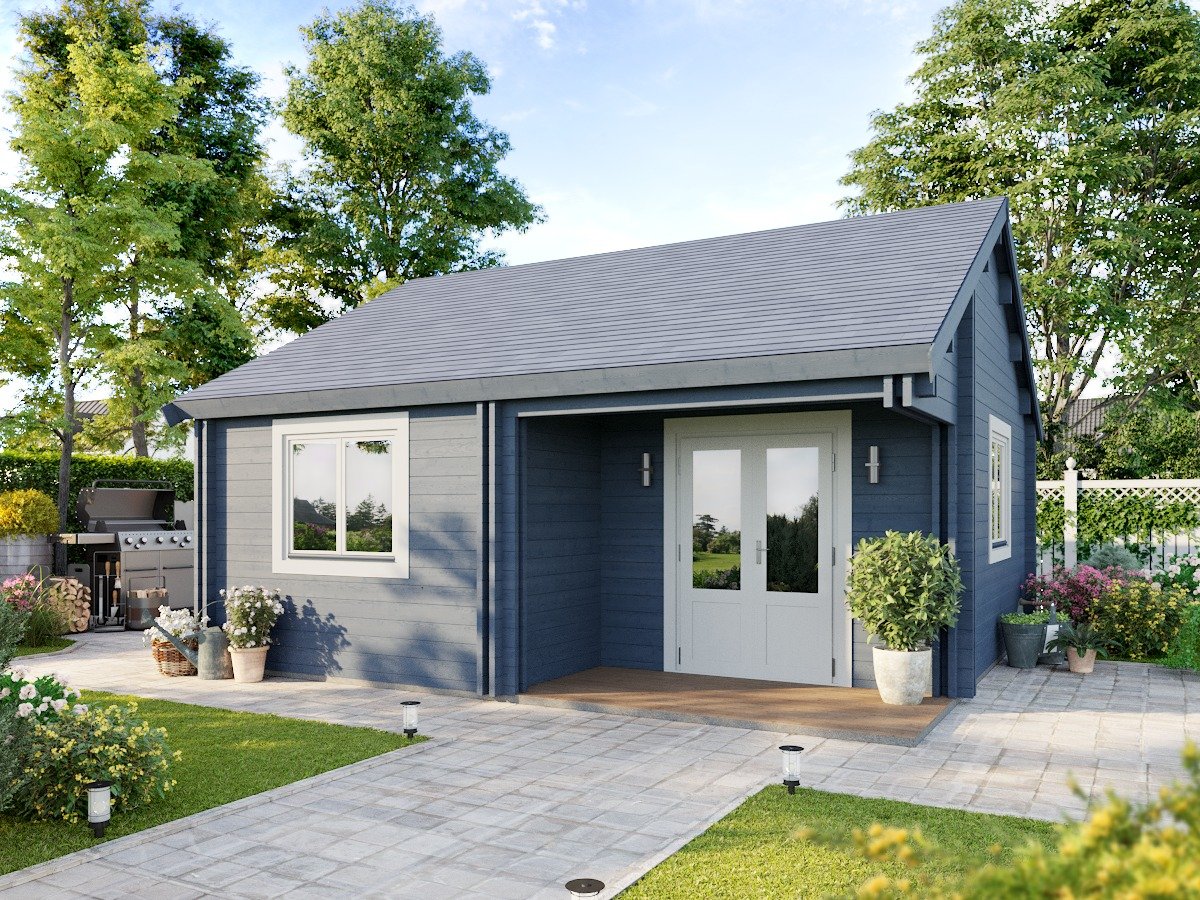
Source : Creative Living cabin
Creating an annexe that works for a teenager requires thoughtful design that balances their needs with practical considerations. The right features can make the difference between a space that enhances your teen’s development and one that causes frustration for everyone.
Study space deserves special attention in a teen annexe. Research shows that dedicated, well-designed study areas improve academic performance. Consider incorporating:
- A spacious desk with ergonomic seating
- Good natural lighting supplemented by task lighting
- Sufficient power outlets for computers and devices
- Built-in shelving or storage for books and materials
- Sound insulation to create a quiet study environment
- Wall space for planning calendars or inspiration boards
Technology infrastructure is non-negotiable for today’s teenagers. Your annexe should include:
High-speed internet connection (wired and wireless options)
Sufficient electrical outlets throughout the space
Good mobile signal or signal boosting options if needed
Smart home features for security and convenience
Consider how your teenager actually lives when designing social spaces in the annexe. A comfortable area where they can relax with friends creates a healthy middle ground – they can socialise without complete privacy concerns but also without disrupting the main household.
Kitchen facilities should match your teen’s abilities and your comfort level. Options range from a simple microwave and fridge to a complete kitchen setup. Consider this decision carefully based on your teenager’s maturity and cooking skills.
The bathroom should be functional but also designed to teach good habits. Include sufficient storage, easy-to-clean surfaces, and perhaps a laundry hamper to encourage regular clothes washing.
When Should Your Teenager Move into the Annexe?
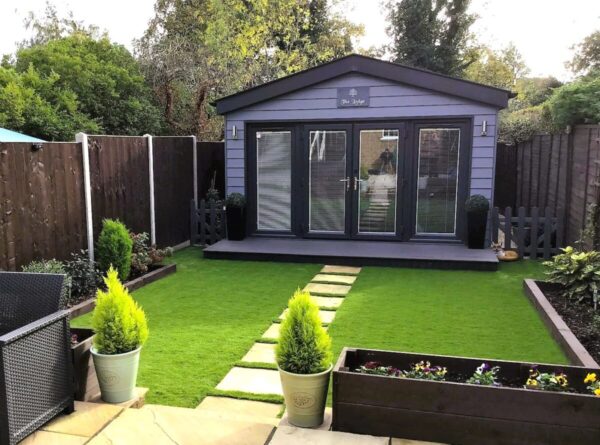
Source : The Green Room
Timing matters significantly when considering an annexe for your teenager. This decision should account for both practical and developmental factors. Most families find that mid to late teens (16-19) represents the sweet spot for annexe living, though individual maturity varies considerably.
Before making the move, assess your teenager’s readiness honestly. Look for signs like:
- Demonstrated responsibility with current household duties
- Ability to manage their schedule without constant reminders
- Basic self-care skills (laundry, meal preparation, cleaning)
- Emotional maturity to handle increased alone time
- Respect for house rules and family boundaries
- Academic self-discipline without direct supervision
The transition works best when clear expectations are established from the beginning. Create written agreements covering:
House rules specific to annexe living, including:
- Curfew expectations (if applicable)
- Visitor policies – who can visit and when
- Noise considerations
- Shared vs. private spaces
- Family meal expectations – will they join for dinner regularly?
- Communication protocols – how you’ll stay connected
Many families benefit from a gradual transition plan. This might involve your teenager spending increasing amounts of time in the annexe before fully moving in. Start with occasional nights, then weekends, then a trial period before making the arrangement permanent.
Regular check-ins should be scheduled during the early months. Weekly family meetings can address any emerging issues before they become problems. This communication structure helps teenagers feel supported while respecting their growing independence.
Legal Alternatives If Annexe Living Isn’t Possible
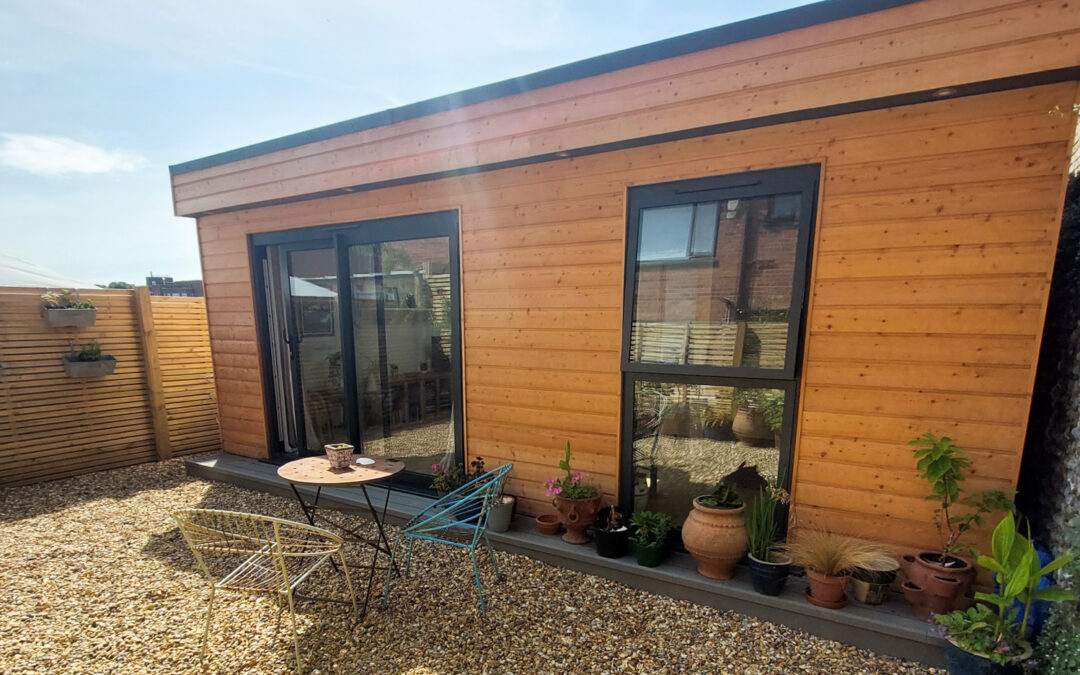
Source : Swift Garden Rooms
Not every family can build a full garden annexe due to space limitations, budget constraints, or planning restrictions. Fortunately, several legal alternatives can achieve similar benefits for teenager independence while working within these constraints.
Temporary conversion options within your existing home offer practical solutions. Consider:
- Converting garage space into a teen suite
- Basement conversions with separate access
- Loft conversions with improved soundproofing
- Garden rooms that don’t require full residential planning permission
Some families successfully create semi-independent spaces using garden buildings that fall under permitted development rights. These structures cannot legally be used as permanent bedrooms, but they can serve as daytime retreats, study spaces, or social areas for teenagers while they continue to sleep in the main house.
When exploring these options, be aware of the legal boundaries. Key considerations include:
- Permitted development rights for your property and area
- Building regulations for any internal modifications
- Fire safety requirements for converted spaces
- Insulation and heating standards for comfort and safety
Local councils sometimes offer zoning exceptions for family accommodations, particularly in cases where there are special circumstances. It’s worth consulting with your local planning department about your specific situation, as policies vary between authorities.
For short-term solutions, some families use mobile structures like shepherd’s huts or tiny homes on wheels, which may have different planning considerations than permanent structures. However, always check local regulations before proceeding with any alternative.
Transform Your Garden into the Perfect Teen Living Space
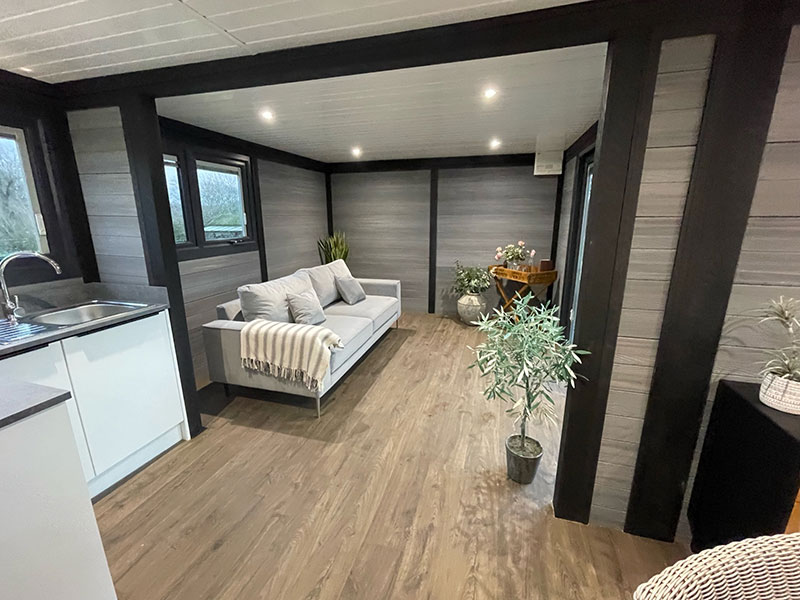
Source : Composite Garden Buildings
Creating an annexe for your teenager represents an investment in their development and your family’s harmony. With careful planning, this space can evolve with your family’s needs over time – serving as a teen retreat now and potentially accommodating other family members or purposes later.
Begin by thoroughly researching your options. Visit show sites to see different annexe styles and layouts in person. Many annexe companies offer virtual tours as well, allowing you to explore possibilities from home. Take your teenager along – their input will increase their investment in the project and ensure the space meets their needs.
Professional advice makes all the difference in navigating the planning and construction process. Specialist annexe companies offer:
- Planning permission expertise specific to annexes
- Design consultation tailored to teenage living
- Building regulation compliance assurance
- Project management throughout construction
- Warranty protection for your investment
The right annexe creates a balance that works for everyone – giving your teenager room to grow while maintaining family connections. Parents often report that annexe living actually improves their relationship with their teens, as interactions become more intentional and less focused on daily friction points.
Consider how the annexe might serve your family long-term. A well-designed space can later function as:
- Accommodation for returning university students
- A starter home for young adults saving for their first property
- Guest accommodation
- A home office or creative studio
- Eventually, its original purpose as a granny annexe
This flexibility makes the investment particularly worthwhile, serving your family through different life stages. With property prices continuing to rise, an annexe adds value to your home while providing practical living solutions.
Yes, your teenager can legally live in a granny annexe, provided you follow the proper planning and building regulation requirements. This arrangement offers a unique opportunity to support their journey to adulthood while maintaining family connections. By creating a space that respects their growing independence while providing appropriate support, you’re giving your teenager a valuable head start on adult life skills in a safe, nurturing environment.
FAQ
Who can live in an annex?
The annexe can be joined to the main property or be an outbuilding or independent structure, but the annexe is always part of the same address. Annexes are self-contained living spaces, often used by elderly members of a family, grown-up children or as holiday lets.
What is the difference between ADU and Granny flat?
A granny flat is a detached living space on the property of a single-family home. It can also be referred to as an ADU, or accessory dwelling unit. The term ‘granny flat’ comes from one of the popular uses of an ADU as a home for elderly or aging relatives.
Does a granny annex add value?
It can be a great way to add extra living space to your home and can also be a source of rental income. A study by Checkatrade found that on average, an annexe will raise the value of your property by 20-30%.
What is the difference between a granny flat and an annex?
The main difference between the two is that a granny flat is more commonly associated with being an extension of the main home or a modification of unused space. For example, converting a garage into a granny flat. A granny annexe is a term used to describe a self-contained living space on the same property grounds.
Do you need planning permission to convert a garage to a granny annex?
Planning permission is not normally required to convert a detached garage into living accommodation, provided that the work is internal and does not involve enlarging the building. The building must also only be used for a purpose incidental to the enjoyment of the existing dwellinghouse.
Sources
[1] https://swiftorg.co.uk/blog/granny-annexe-key-questions/ [2] https://www.gransnet.com/forums/house_and_home/1269528-GRANNY-ANNEX [3] https://www.logcabinhome.co.uk/granny-annexes/garden-annexe-uses.php
Need Fencing Advice?
Let's discuss your fencing project. Oakley Fencing offers expert solutions in SE London & North Kent.
Get Your Free Fencing Quote